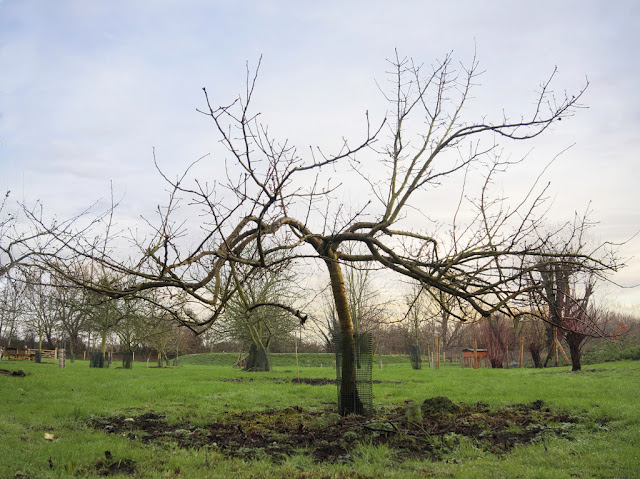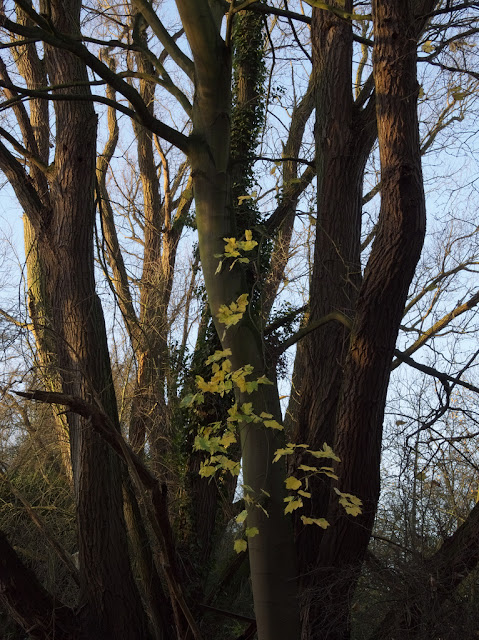Winter
is a quiet time in the landscape: the trees have lost their leaves;
the fruit has fallen or has been picked; only a few flowers bloom;
and, besides cuckoo pint, plants are not growing.
 |
| Centre of Park - 20 December 2015 |
With
approximately a third of the area of Milton Country Park covered with
trees and bushes, the whole atmosphere of the park is altered when the trees lose their leaves. From a very green (albeit tired green by the end of summer) and enclosing space, it becomes dull, drab and brown and with a much more open feel about it. In
compensation for the lack of colour in the trees, their intricate
structure can be fully appreciated, particularly when they are
silhouetted against a January sunrise.
 |
| Dickerson's Pit - 28 December 2015 |
I am not a great fan of sunrise / sunset images. I have had a dislike of dusk ever since I was a child, and see only very negative connotations in that time of day - loneliness, death, and endings are just three of the feelings invoked by nightfall ( I believe the French author Proust had a similar dislike). However, the dawn sky in this picture adds a suitable wintry but colourful background to these trees on the east edge of Dickerson's Pit.
 |
| Todd's Pit - 8 January 2016 |
Even in the depth of winter, the trees are not entirely without colour. These poplar trees just north of the 13th Public Drain are anything but drab as they catch the early morning sun.
 |
| Todd's Pit - 28 January 2016 |
Also colourful, are the
young shoots on the willow trees which are red/orange, a colour that becomes very
pronounced when illuminated by the early sun. Almost the entire
length of the west bank of Todd's Pit is bordered by willows, such as
the one shown here.
 |
| Dickerson's Pit - 8 January 2016 |
Even
without leaves, the tallest trees in the park are an impressive sight.
Here, a pergola of towering trees completely dwarfs the path along the eastern side of Dickerson's Pit that runs between the pillars of ivied trunks.
In
his book, 'Inner Landscapes', David Ward divides photographs into
those that are denotative and those that are connotative. The former
are images which show a scene without evoking any emotional response
in the viewer. The latter elude to more than they show; they are
evocative. For me, some images illicit a great sense of anticipation
of what will develop. For instance, I can look at a picture of a
newly sown seed bed and 'see' the fully grown vegetables in my
imagination. Strangely enough, this picture of the orchard remains
for me a very stark and cold reminder of winter, despite the fact
that I know in a few months all the trees will be white with blossom.
But
not all trees are so barren even in the depth of winter. I finish this post with a picture of an
alder tree heavy with catkins at the darkest time of the year.
Next: Midwinter Spring
Books and Blogs
I have just started reading Karen Thornburn's blog on landscape photography of Scotland. I love Scotland, particularly the western highlands, which fact alone would make me want to follow any blog of Scottish landscapes. But, of special interest to me, is Karen's concentration on her home area of the less spectacular Black Isle.Next: Midwinter Spring












